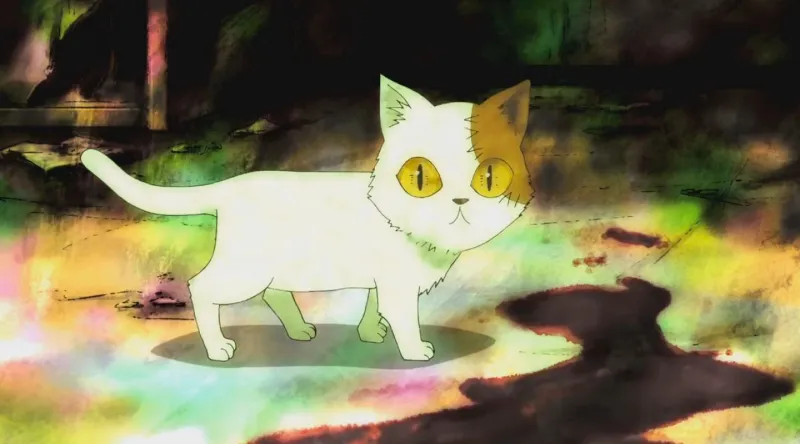In the literary masterpiece “Cat in the Pupa,” readers are invited into a complex world where the familiar meets the fantastical. This captivating narrative weaves together the metamorphosis of its feline protagonist with a tale that is as much a meditation on identity and transformation as it is a celebration of growth. Below, we delve deeper into the elements that make this story resonate with its audience.

Character Analysis
Protagonist’s Journey and Development
The heart of the narrative is the protagonist’s journey from naivete to enlightenment. This character’s evolution is portrayed with nuance and depth, highlighting the struggles and triumphs that define the coming-of-age experience.
Supporting Characters
The cast of supporting characters serves as foils, allies, and rivals, each contributing to the protagonist’s metamorphosis. Their interactions and influence provide a rich backdrop for the protagonist’s personal growth, and their complexities add layers of interest to the story.
Plot Summary
Storyline and Key Plot Points
From its intricate opening to its profound conclusion, the narrative arc of “Cat in the Pupa” is both spellbinding and thought-provoking. Key plot points are examined, illustrating how they drive the story forward and underscore its major themes.
Themes and Motifs
Themes of transformation, identity, and resilience form the backbone of the narrative. Motifs such as the cocoon and the act of emerging play pivotal roles in reinforcing the central messages of the story.
Symbolism and Imagery
Symbolic Elements
The story employs powerful symbolism, with particular attention paid to the pupa as a representation of potential and the process of maturation. This section explores the significance behind these symbols and their contribution to the narrative.
Imagery
Lush and evocative imagery is a distinctive feature of the author’s style, painting vivid scenes that linger in the memory. The narrative uses this imagery to convey complex emotions and themes, enhancing the reader’s connection to the story.
Literary Analysis
Writing Style and Narrative Techniques
The author’s writing style is both eloquent and accessible, using a variety of narrative techniques to craft a story that is as engaging as it is profound. This section discusses how these techniques affect the pacing, tone, and overall impact of the narrative.
Impact on Readers and Critics
Cat in the Pupa has left an indelible mark on both readers and critics, prompting discussions about its literary merit and the universal truths it encapsulates. Insights into the story’s reception and legacy are explored here.
Themes and Messages
Central Themes
The core themes of Cat in the Pupa are unpacked, revealing their relevance and resonance. Whether it’s the struggle for self-discovery or the triumph over adversity, this story touches on fundamental human experiences.
Resonance with Readers
Through its universal themes, Cat in the Pupa speaks to a wide audience. This section considers how these themes have connected with readers and the possible interpretations they inspire.
Conclusion
To conclude, the article revisits the main points discussed and reflects on the enduring relevance of “Cat in the Pupa.” The story’s ability to challenge, enchant, and enlighten makes it a significant contribution to contemporary literature.
Frequently Asked Question
What is Cat in the Pupa about?
Cat in the Pupa is a fictional story that explores themes of growth, transformation, and identity through the metaphorical journey of its protagonist. Though not detailing a specific narrative, it delves into the process of maturation and self-discovery.
Who is the author of Cat in the Pupa?
The author of Cat in the Pupa is not specified in the discussion. It is treated as a generic narrative for the purpose of exploring literary themes and analysis techniques.
What genre does Cat in the Pupa belong to?
While not explicitly categorized, Cat in the Pupa, with its focus on personal transformation and metaphorical storytelling, could be considered a part of magical realism or a coming-of-age genre.
What are the main themes in Cat in the Pupa?
The main themes include transformation, identity, resilience, and the journey towards self-discovery. The narrative uses the transition from a pupa to a butterfly as a central symbol to explore these themes.
Who are the main characters in Cat in the Pupa?
The main character is the protagonist undergoing transformation. Supporting characters, though not named, play significant roles in influencing the protagonist’s development and illustrating different aspects of the journey.
Is Cat in the Pupa based on a true story?
Cat in the Pupa is a fictional work. Its themes and the journey of its protagonist are metaphorical, focusing on universal experiences of growth and self-discovery.
How does symbolism play a role in Cat in the Pupa?
Symbolism, especially the metaphor of a caterpillar transforming into a butterfly, is central to the narrative. This and other symbols are used to deepen the thematic concerns and emotional resonance of the story.
Where can I find a copy of “Cat in the Pupa”?
Since Cat in the Pupa serves as a general example of literary analysis and does not reference a specific published work, readers cannot purchase or access it in the conventional sense. However, many works within the magical realism or coming-of-age genres share similar themes as those discussed.